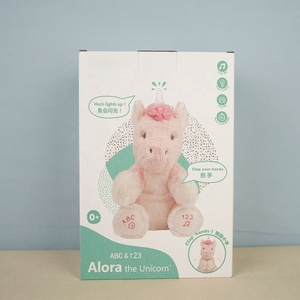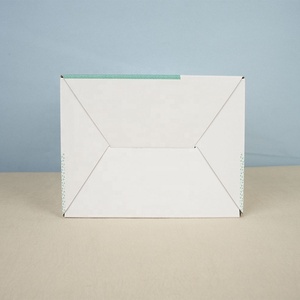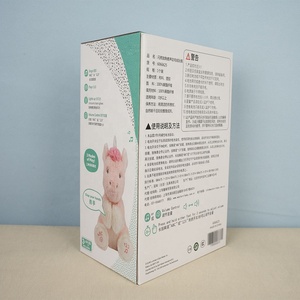(7339 products available)




































































































































 Ready to Ship
Ready to Ship













 Ready to Ship
Ready to Ship


























































There are various types of plush toy packaging, including:
Plastic bags
Plastic bags are among the most common types of packaging for plush toys. They are economical and easy to use. Moreover, they are lightweight and help keep the product's total weight low. This form of packaging is appropriate for low-cost plush toys. It is also ideal for products that do not require much elaborate packaging. Buyers can find several types of plastic bags for packaging, including resealable and non-resealable options.
Clam shell packaging
Clam shell packaging consists of two halves made of plastic that are hinged together. This packaging style is similar to a clam shell, hence the name. It offers excellent protection for the enclosed plush toy. Additionally, it allows potential consumers to view the item easily. This packaging type is suitable for plush toys with added features, such as sound or light. It also works well for toys with several components.
Cardboard boxes
Cardboard boxes are versatile and can be used for various products, including plush toys. They offer better protection than plastic bags. The boxes are easily stackable, making them suitable for retail displays. Also, they allow more elaborate branding elements, such as printing and graphics. Buyers can get numerous types of cardboard boxes with different shapes, sizes, and closure systems.
Window boxes
Window boxes have a transparent panel, which can be a plastic or glass pane. The panel allows consumers to view the plush toy without opening the box. This feature offers the protective benefits of a box while still providing a glimpse of the product. Window boxes are excellent for plush toys that are part of a collection or limited edition releases. The panel can be a die-cut plastic or a full-size glass window.
Gift boxes
Gift boxes are usually used to package plush toys meant as gifts. They come in various shapes and sizes, from small to large. Additionally, they have different designs, such as festive patterns or special occasion themes. Some gift boxes also have features such as ribbons, handles, and magnetic closures. Such boxes offer an attractive and convenient packaging option for plush toys.
Blister packaging
Blister packaging consists of a plastic dome that is sealed to a backing card. The backing card has the branding elements, while the dome showcases the plush toy. Blister packaging is similar to clam shell packaging, but the plastic dome covers the entire product. It offers a good balance of protection and visibility. Blister packaging is suitable for small plush toys or keychain-sized toys.
When choosing packaging for plush toys, businesses should consider factors that will help them stand out in the market. For example, they should choose packaging that is appropriate for the toy's size and shape. Commonly, businesses have a range of sizes and shapes of plush toys. As such, they can use boxes, bags, or bins of different sizes and shapes to accommodate the toys.
Also, businesses should consider the material of the packaging. For instance, packaging made with high-quality material can handle the weight and shape of the plush toys. Moreover, they should consider using eco-friendly materials. Nowadays, many customers are going green and will appreciate businesses that are using eco-friendly materials. Additionally, they should consider the printing and graphics on the packaging. They can use vibrant colors and high-quality images that will attract their customers. Also, they can include the brand story, which can create a connection with the customers.
Moreover, they should consider the design of the packaging. It should be eye-catching and reflect the theme and style of the plush toy. Additionally, they should consider the functionality of the packaging. For example, if the packaging can be used for storage, it will add value to the toy. Furthermore, they should consider the presentation of the packaging. They can use inserts or tissue paper to secure the plush toy and make the packaging attractive. More importantly, they should consider the cost of the packaging. They should get a cost-effective packaging solution that fits their budget.
Finally, they should consider the safety of the plush toy packaging. The packaging should be safe and non-toxic, especially if the toy is for kids. Also, they should ensure that the packaging complies with the industry regulations. This includes labeling requirements and safety standards. By considering these factors, businesses can choose packaging that enhances their plush toy's appeal, protection, and branding.
Here are some common safety features to consider for plush toy packaging:
Non-Toxic Materials
The packaging should be made of non-toxic materials. This ensures that if a child comes into contact with or puts it in their mouth, it will not cause harm. Look for materials that comply with ASTM F963 and EN71 standards.
Choking Hazard Warnings
The packaging should clearly indicate the presence of small parts. This includes buttons, eyes, or other detachable components that could pose a choking hazard to young children. It should also have age recommendations.
Sharp Edges and Points
The packaging should be free from sharp edges and points that could cut or scratch a child. This includes using rounded corners and smooth surfaces.
Durability and Strength
The packaging should be made of sturdy materials that can withstand rough handling. This prevents small pieces from becoming dislodged and creating potential hazards.
Secure Closures
The packaging should use secure closures that prevent the toy from falling out. This reduces the risk of small parts becoming lost and out of reach.
Here are some quality features to consider for plush toy packaging:
Material Quality
The packaging should be made from high-quality, durable materials. This ensures it protects the plush toy and adds to the overall presentation.
Design and Aesthetics
The packaging should have an attractive design that complements the plush toy. This includes eye-catching colors, graphics, and typography that appeal to the target market.
Window Displays
The packaging should include window displays that allow customers to see the plush toy inside. This feature adds an interactive element and helps customers make informed purchasing decisions.
Branding
The packaging should feature clear and prominent branding. This includes the brand's logo, name, and any relevant symbols or images that are easily recognizable.
Secure Closures
The packaging should use secure closures that prevent the toy from falling out. This reduces the risk of small parts becoming lost and out of reach.
Are eco-friendly packaging options more expensive?
Generally, eco-friendly packaging options are cheaper. This is because they are made from sustainable materials and the production methods used to create them are efficient and low-impact. Moreover, using eco-friendly packaging can improve a brand's image, leading to increased sales and customer loyalty.
What materials are commonly used in eco-friendly plush toy packaging?
Some eco-friendly materials used in packaging include recycled paper, cardboard, and bioplastics. These materials can minimize the environmental impact of packaging and reduce waste.
How can packaging be designed to minimize material usage?
To minimize material usage, packaging can be designed to be simple and efficient. This can be achieved by creating packaging that is easily biodegradable, recyclable, or compostable. Moreover, manufacturers can reduce the amount of material used in packaging by creating packaging that is appropriately sized for the product.